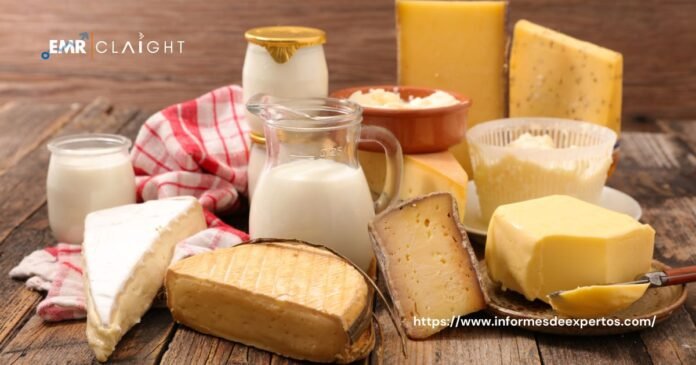The Latin America dairy market encompasses a wide range of dairy products, including milk, cheese, yogurt, butter, and others, that play a vital role in the region’s food industry and dietary habits. With a market value of USD 80.34 billion in 2023 and a projected Compound Annual Growth Rate (CAGR) of 3.50% between 2024 and 2032, the Latin America dairy sector demonstrates steady growth and significant potential for expansion in the coming years.
Overview
The Latin America dairy market is characterized by a diverse array of products catering to the nutritional needs and culinary preferences of consumers across the region. Dairy products serve as essential sources of protein, calcium, vitamins, and other nutrients, forming integral components of traditional diets as well as modern culinary innovations. The market encompasses both traditional dairy items and value-added products, reflecting evolving consumer tastes and lifestyle trends.
Market Dynamics
Several factors influence the dynamics and growth of the dairy market in Latin America:
- Population Growth and Urbanization: Population expansion and urbanization contribute to increased demand for dairy products in Latin America, driven by rising disposable incomes, changing dietary habits, and urban lifestyle preferences. As urban populations grow, so does the consumption of dairy products, including milk, yogurt, and cheese, as staples in daily diets and culinary preparations.
- Rising Health Consciousness: Growing awareness of the nutritional benefits of dairy products, coupled with a focus on health and wellness, fuels demand for functional dairy items, such as probiotic yogurt, fortified milk, and low-fat cheese variants. Health-conscious consumers seek dairy options that offer specific health benefits, including digestive health, bone strength, and immune support, driving innovation and product diversification in the market.
- Product Innovation and Diversification: Dairy manufacturers in Latin America continually innovate to meet evolving consumer preferences and market trends, introducing new flavors, formulations, and packaging formats to attract consumers and differentiate their brands. Value-added dairy products, such as flavored yogurt, artisanal cheese, and lactose-free milk, cater to niche segments and premium market segments, expanding the overall market reach and profitability.
- Trade Dynamics and Export Opportunities: Latin America’s dairy industry benefits from export opportunities to international markets, driven by the region’s competitive advantages in dairy production, favorable climatic conditions, and adherence to quality standards. Countries such as Brazil, Argentina, and Uruguay are major exporters of dairy products, including milk powder, cheese, and butter, contributing to the region’s economic growth and trade balance.
Key Players
The Latin America dairy market features a mix of domestic dairy companies, multinational corporations, and cooperatives, including:
- Lactalis Group: Lactalis, a global dairy leader, operates in Latin America through various subsidiaries and brands, offering a wide range of dairy products, including milk, cheese, yogurt, and butter. The company’s strong distribution network and brand recognition position it as a key player in the regional market.
- Nestlé: Nestlé is a prominent player in the Latin America dairy market, known for its diverse portfolio of dairy brands and products tailored to local tastes and preferences. The company’s commitment to innovation, quality, and sustainability enhances its competitiveness in the dynamic dairy sector.
- Danone: Danone is a leading dairy manufacturer in Latin America, offering yogurt, fresh dairy products, and specialized nutrition items targeted at different consumer segments. The company’s focus on health and wellness, as well as environmental sustainability, resonates with Latin American consumers seeking nutritious and responsibly sourced dairy options.
Future Outlook
The Latin America dairy market is poised for continued growth and innovation, driven by factors such as population expansion, urbanization, and increasing consumer awareness of health and wellness. Opportunities exist for dairy companies to invest in product development, distribution infrastructure, and marketing strategies to capitalize on emerging trends and preferences in the dynamic regional market.





